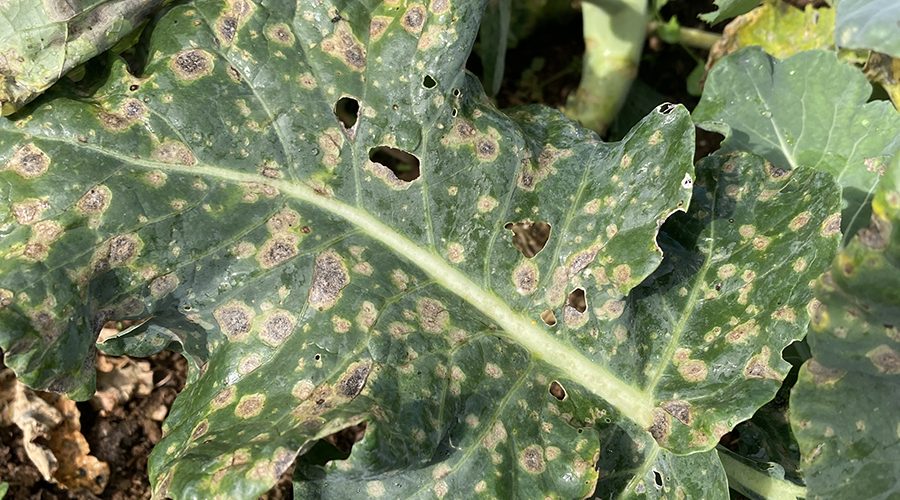This is a common disease that strikes a lot of plants in the brassica family, like broccoli, kale and cabbage leaves. It is particularly prevalent during prolonged periods of warm, damp weather, so these last few weeks here in Cornwall have been an ideal breeding climate!
Which plants are affected?
The most commonly affected plants are from the brassica family. You may well see it developing on Cavolo Nero, Broccoli Plants, Brussels Sprouts, as well as Cabbages, other Kale plants and even Swede/Turnip leaves.
How to recognise alternaria leaf spot
The first signs are usually dark spots developing on the leaves which then develop outer yellow rings. Eventually the spots will grow bigger and begin to merge together until the whole leaf becomes yellowish with lots of holes where the brown spots were (as they rot away)
What damage does it do?
To be honest, the damage is largely cosmetic, especially if you keep it reasonably under control – if it’s broccoli, or sprouts, for example, you’ll probably be able to still harvest decent looking crops. However, it’s not hugely appealing to harvest kale leaves that look like this and we wouldn’t recommend eating them if they are affected.
How to keep it at bay
As with most fungal diseases, like blight, chocolate leaf spot, mildew etc, the key is to remove affected leaves as soon as you see signs of the disease appearing. Pick the leaves off or use secateurs to cut them cleanly off the stalk. Clear up any old leaves from the ground too – this is really crucial for brassicas as the old leaves fall off and make a wonderful breeding ground for fungal diseases (as well as encouraging slugs) – the tidier the soil, the better.
The plants will benefit from a liquid feed to boost nutrients that will then help them withstand disease better – do this on a dry day, being careful to water just the soil and not getting the leaves wet. Do it in the morning so that the soil can dry again during the day.
Create a bit more air circulation between plants by pruning them out a bit – you can do this quite easily by removing some of the older, lower leaves that are a bit larger and more susceptible. It’s worth pruning these leaves out anyway even if you don’t see signs of disease, as it will help to keep the plant healthy and productive.
Can I prevent it next year?
You can certainly minimise it coming back in the following year by removing affected foliage early this year. You will also want to mulch well ahead of spring planting, and rotate crops (i.e don’t plant brassicas in the same patch next season.) Good plant spacing always helps too – perhaps plant brassicas a tiny bit further apart next time to give them a little more air.

